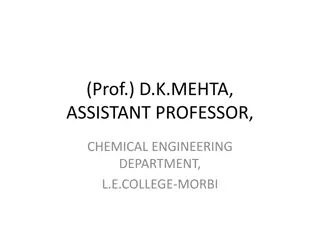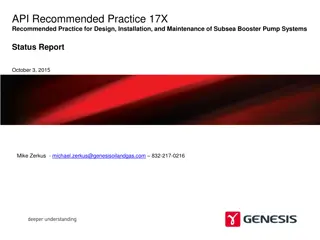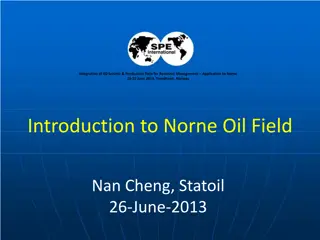State & Parameter Estimation for Gas-Liquid Cylone in Subsea Production
Discussing the challenges, research status, and scope of estimation for Gas-Liquid Cylindrical Cyclones in subsea production, focusing on the use of soft sensors and different estimation techniques like Unscented Kalman Filter and Linear Moving Horizon Estimator.
Download Presentation

Please find below an Image/Link to download the presentation.
The content on the website is provided AS IS for your information and personal use only. It may not be sold, licensed, or shared on other websites without obtaining consent from the author.If you encounter any issues during the download, it is possible that the publisher has removed the file from their server.
You are allowed to download the files provided on this website for personal or commercial use, subject to the condition that they are used lawfully. All files are the property of their respective owners.
The content on the website is provided AS IS for your information and personal use only. It may not be sold, licensed, or shared on other websites without obtaining consent from the author.
E N D
Presentation Transcript
SUBPRO SUBSEA PRODUCTION AND PROCESSING State and parameter estimation for a Gas-Liquid Cylindrical Cyclone Torstein Thode Kristoffersen and Christian Holden
SUBPRO Subsea compact separation Offshore oil and gas production Current status New discoveries Subsea compact gas-liquid separation reducing the number of flowlines and topside processing capacity providing cost-efficient hydrate management enabling single-phase boosting enabling long range gas compression Foto: Statoil ASA 2
SUBPRO Gas-Liquid Cylindrical Cyclones (GLCC) 3
SUBPRO Challenges Equipment located at the seabed Limited and costly maintenance interventions Sensor requirements Sensors quality and availability limitations prone to failures low data quality limited number of sensors 4
Soft sensors (estimators) Cost-efficient alternative to physical sensors Principle Types of soft-sensors stochastic estimators deterministic estimators 5
SUBPRO Research status of GLCC separators Extensive research on control of GLCC separators non-model based using few measurements model based using several measurements Little research on estimation of GLCC separators Extended Kalman Filter (EKF) Adaptive estimation 6
Scope of this presentation Comparison of a stochastic and a deterministic estimator Unscented Kalman Filter (UKF) Linear Moving Horizon Estimator (MHE) Realistic measurements Discrete-time estimation execution at discrete-time Different frequency for estimation and prediction 7
Estimator design Objective Prediction model Observation model 8
Unscented Kalman Filter (UKF) Principle Estimation procedure sigma points eq two steps Frequencies 10
Linear Moving Horizon Estimator (MHE) Principle Optimal Estimation Problem (OEP) Estimation procedure linearize around previous estimate (aut) substitute past observations into OEP solve OEP to obtain the current discrete-time estimate repeat at next sampling instant qpOASES Frequencies 11
Configuration Tuning covariance matrices Simulation scenario changing inlet conditions (flow rate and composition) Measurement noise 12
Conclusions Comparison between a discrete-time UKF and MHE Evaluated based on statistical properties UKF performed better than linear MHE UKF uses nonlinear estimation model MHE uses linear estimation model Uncertain estimation model pressure dynamics largely described by unknown parameters creating significant oscillations 16























